|
Let's talk about perception and value—specifically, how we view the cost of dessert. Walk into any café or glance at a dessert menu, and you'll likely see a slice of cake priced at £5 or £6. It's a price we've come to accept without question, considering it a reasonable indulgence for a single serving of a tasty treat. But what happens when we shift our perspective to the wedding world? Suddenly, the conversation changes. When faced with the prospect of investing in a wedding cake to feed 100 guests, some might recoil at the idea of spending £500, £600 or more. "Isn't that a bit steep?" they ask, puzzled by the apparent disconnect between the cost of a café treat and a wedding staple. Here's the thing: when it comes to dessert, we've been conditioned to accept a certain price point. We don't bat an eye at spending £5 on a slice of cake because it's a fleeting pleasure, a momentary indulgence that satisfies our sweet tooth. But when that same price is applied to a wedding cake—an artisan creation that serves multiple portions and is the beautiful focal point of the entire reception—suddenly, it's seen as excessive. But let's take a step back and consider what goes into creating a wedding cake. It's not just flour, sugar, and butter—it's a labour of love, a masterpiece crafted with care and attention to detail. Each layer is baked to perfection, stacked with precision, and adorned with personalised decorations that reflect the couple's unique style and taste. Unlike the generic offerings you might find in a café or restaurant, your wedding cake is beautifully decorated and is a reflection of your unique style and personality. Whether you opt for intricate sugar work, hand-painted details, or a bespoke flavour combination, every aspect of your cake is tailored to your preferences. Then consider the logistics involved in bringing your wedding cake from conception to reception. From the design sketch created to your requirements and specifications, to coordinating with vendors to ensure timely delivery, there's a whole lot more going on behind the scenes than meets the eye. Talking of delivery— that's a logistical feat in itself. Ensuring that a multi-tiered cake arrives at the venue intact and ready to impress requires careful planning and coordination. And let's not forget about the architecture involved in keeping it straight and sturdy, ensuring that it stands tall and proud throughout the celebration, normally in the height of summer, that all comes with the experience and expertise of a wedding baker who knows what they are doing. When you think about it all, the price tag on your wedding cake means more than just numbers. It's about putting your money into craftsmanship, personal touch, and memories that'll stick around. So, next time you're unsure about the cost, think back to that cake or dessert you grabbed at your local coffee spot. Ask yourself if it is fair to expect an artisan baker to create a custom masterpiece for you, with all the work it takes to get it from their kitchen to your reception, for less than what a multimillion pound coffee chain charges for their mass-produced cake or dessert? Next time you're sipping on that overpriced latte, think about the true value of artisan craftsmanship.
0 Comments
Planning a wedding involves making countless decisions, and one delightful choice is selecting the perfect wedding cake. The world of wedding cakes is ever-evolving, with new flavour combinations and design styles emerging each season. Let's dive into the latest trends that are sweeping the wedding cake industry. Flavourful Adventures: 1. Unique Flavour Combinations: Couples are steering away from traditional choices, opting for unique and unexpected flavour combinations. Imagine lavender and honey, chai spice, or exotic fruit infusions—these combinations offer a delightful departure from the ordinary. 2. Alcohol-Infused Cakes: For a touch of sophistication, more couples are incorporating alcoholic beverages into their cake flavours. Champagne, gin, and flavored liqueurs bring a rich and flavourful twist to the classic wedding cake. 3. Citrus and Floral Notes: Light and refreshing flavours with citrusy zests (lemon, orange) and delicate floral notes (lavender, elderflower) are gaining popularity, particularly for spring and summer weddings. 4. Earthy and Nutty Flavors: Indulge in the richness of pistachio, hazelnut, and almond. These earthy and nutty flavors are making a statement, appealing to couples seeking something beyond the ordinary. 5. Vegan and Gluten-Free Options: Recognising diverse dietary preferences, wedding cakes are embracing inclusivity with options like vegan and gluten-free cakes, ensuring that everyone gets to savor the sweetness of the celebration. Artistry in Design: 1. Minimalist Designs: Less is more. Clean lines, smooth buttercream finishes, and simple fondant textures are taking center stage, bringing an air of sophistication to wedding cake designs. 2. Watercolor Accents: Art meets cake with watercolour-inspired designs. Soft, blended hues create elegant and dreamy effects, adding a touch of personalised artistry to the wedding cake. 3. Metallic Accents: Metallic elements in gold, silver, and copper are lending a touch of glamour to wedding cakes. Whether it's metallic fondant, edible metallic leaf, or metallic-colored details, the result is pure opulence. 4. Geometric Patterns: Embracing contemporary chic, geometric patterns with sharp lines and angles are making a statement in wedding cake designs, adding a modern touch to the classic tiered confection. 5. Texture Play: Textured cakes are creating visual interest with elements like ruffles, lace patterns, and edible flowers. These textures add depth and dimension, transforming the cake into a sensory delight. 6. Hand-Painted Details: Hand-painted designs bring a personalised and artistic touch to wedding cakes. Intricate florals, abstract patterns, or even scenes that tell a story are becoming popular choices for couples who want a truly unique cake. As you embark on the journey of choosing your wedding cake, consider these trends for a cake that not only tastes divine but also serves as a stunning centerpiece for your special day. Stay tuned for updates as the world of wedding cakes continues to evolve, bringing new flavours and designs to sweeten your celebration. Wedding cakes are an essential part of most wedding ceremonies. But why? They often cost a lot of money and take up a lot of space so they can feel like an unnecessary addition to a wedding. However, recent studies show that couples who opt to include a wedding cake in their ceremony report a greater sense of satisfaction and joy in their unions. Read on to discover why wedding cakes are a necessary addition to your special day and how they can add an extra level of enjoyment to your wedding ceremony and why a wedding cake just may be one of the most important elements of your wedding. We know that a wedding cake is more than just a tasty treat — it’s an important part of the wedding tradition. With a wedding cake, you can celebrate, create something truly unique, and add another layer of luxury to your special day. Whether you’re going for a classic look or something out of the ordinary, a wedding cake can help make your wedding day perfect. So if you’re looking to make your wedding day unforgettable, you can’t miss the timeless elegance of a wedding cake. As the saying goes, “a wedding without a cake is like a night without stars.” Let your wedding cake be the star of your special day! The cheers, applause, and epic music that fill the room as you and your partner cut into your wedding cake is a moment from your wedding day that will stay vivid in your memory forever. Making it a truly special moment calls for a cake that reflects you as a couple -- a fun, unique, and creative expression of your love story. This farewell to the formal proceedings and entrance into the party celebrations is a moment that will stay with you forever. Whether your celebration is small or grand, there are some classic traditions that should never be skipped... especially the edible kind!
Searching for a budget-friendly cake but not sure where to start? With the cost of living problems at the moment and the huge price hikes in butter, sugar and eggs (if we can find them!) pushing cake suppliers to the brink, it may seem difficult to create the cake of your dreams without breaking your wedding budget. To make sure you find a cake that fits your budget and your desires, consider these money-saving tips:
Finding a cake that fits both your budget and your dreams is possible—it just may require a bit of research and communication. Use these tips to help you get the cake you want without shattering your wallet. At the end of the day, the goal when planning a wedding is to make sure you have a beautiful and memorable day, one you can look back on with fondness and great joy. With a few savvy decisions, you can have a dream-worthy cake without blowing your budget. 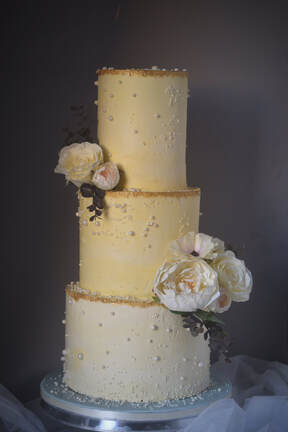 When it comes to your wedding cake, you deserve the best of both worlds:a cake that looks amazing, tastes delicious, and won't break the bank. But how do you get it? The answer is a bespoke wedding cake made by a professional baker. While it may seem like there's a "wedding tax" at work, the truth is that there's so much more than meets the eye. From consultations to paperwork, sketches to emails, ordering custom items and shopping for ingredients, and of course, actual baking, there's a lot more involved than just making "just cake." Bakers have put in the time and effort to train, refine their skills, and purchase the necessary equipment, including for making intricate sugar flowers. Plus, as registered food businesses, they must follow strict food safety guidelines to ensure none of your guests get sick or have an allergic reaction. It's also important to think beyond just the cake's deliciousness and beauty. Hiring an experienced professional will also give you peace of mind that the cake-cutting moment—a key moment on your wedding day—will be executed flawlessly. You can also find companies that offer set designs, which can be cheaper and still provide a stunning cake. But if you want something more personal and unique to your day, a bespoke cake is the way to go. Still worried about the cost? It's important to remember that there are cake designers out there to suit every budget. When it comes to price, the complexity of the design, date, size/servings, and delivery fee to your venue are all factors to consider. So if your budget is more modest, let your designer know upfront and they can suggest a design and size that fits accordingly. When you're shopping for a designer, it's important to check reviews and recommendations to make sure you're getting quality service. And remember, your wedding cake will be the center of attention at your reception, so cutting corners isn't an option. Ready to give your wedding cake the attention it deserves? Start talking to cake designers today and you'll be on your way to the cake of your dreams—without the wedding tax. Real flowers can be an enchanting addition to a wedding cake - adding a vibrant, natural touch with the same colours as your bridal flowers. But when it comes to cake decorating, it’s important to keep safety in mind: many real flowers contain pesticides and some, such as lilies or hydrangeas, are even toxic. Therefore, your cake designer must be the one to carefully add the fresh blooms, making sure that the stems are individually wrapped and that a barrier is in place so no sap will drip into the cake. Additionally, don't forget to consider the season and the weather. For example, peonies are only available in May and June, while hot summer days can cause fast flower wilting. Despite the potential precautions, real flowers can be a beautiful and inexpensive way to top off your cake. Beautiful, realistic, and food-safe, sugar flowers are the perfect way to customise any wedding cake. A talented cake designer will hand-craft each flower with food-safe ingredients and equipment. Of course, such skill and artistry come at a cost, with each flower taking between one hour and several hours to complete - but your wedding day keepsake can last forever with the right conditions (low humidity, out of direct sunlight). No matter the theme or colour plan, with the help of your cake designer, you can find a sugar flower design that fits your budget and completes your big day. WEDDING CAKE PRICES
HOW MUCH DOES A WEDDING CAKE COST? With so many different elements to consider, there’s a world of choice when it comes to choosing your style of wedding cake. From a more simple rustic naked cake to a multi tiered extravaganza dressed with hundreds of sugar flowers, it’s hardly surprising to know that it won't just be the size of your wedding cake that will affect its final price tag. The location, expertise and experience of your cake artist will also affect the price too. Choosing your wedding cake will definitely be one of the most enjoyable parts of your whole wedding planning process (although we are slightly biased!). But how much does a wedding cake actually cost? Here’s our guide to wedding cake prices (as of 2022). We'll go through the styles of wedding cake you can get for your budget, be it £100 or £1000. HOW MUCH DO COUPLES SPEND ON THE CAKE? Do you plan on your wedding cake being a stunning piece of edible art for all to be in awe over before the all important cake cutting photographs (but maybe doesn’t need to feed every single guest?) Or will you’ll be using it in place of a dessert for your guests, so definitely need a piece for everyone? Generally, it’s accepted that the cake should feed around 75% of your guests, as not everyone will want (or have room for) a piece, so bear this in mind when thinking of the size to choose. According to online reports, currently the average spend on a wedding cake is around £350. Wedding budget experts advise that couples allocate approximately 5% of their whole wedding spend (not including honeymoon) on the wedding cake. This figure is obviously only a guideline, for instance big fans of cake (who isn’t?) may want to allocate more than this, but if neither of you have a sweet tooth or don’t consider the wedding cake an important factor, then maybe you’d want to spend less than the advised 5%. WHAT AFFECTS THE PRICE OF CAKE? Size and portions Consider that you are going to a café or tea rooms for a slice of cake, how much would you expect to spend? You’d be right to to expect to spend around £4 - £6 depending on where in the country you were buying it. Multiply this by your number of guests that you want to serve. Then consider that this is just for a slice of cake. No decoration, no delivery, no set up, no design consultation and sketch from an experienced cake artist, just the cake. Region and venue location – As with many other things, London and the South East tend to have higher prices than those around the rest of the country, and the same is true for wedding cakes. Especially in Central London, where delivery, congestion charges and parking need to be considered. Cake makers generally add a delivery cost based on a round trip so it may be worth looking at cake makers close to the venue rather than close to your home. The Overall Design The cake price will be reflective of the time it will take your cake artist to create. A design with many handmade sugar flowers, ruffles, stencilling, piping and other intricacies will take a great deal of time and will of course increase the cost of your wedding cake. Even an experienced cake artist can spend over an hour to make one sugar flower, so it’s only natural that this will add to the price. When buying a wedding cake you are paying for your cake artist’s time and skill. Picasso was at a Paris market when an admirer approached and asked if he could do a quick sketch on a paper napkin for her. Picasso politely agreed, promptly created a drawing, and handed back the napkin — but not before asking for a million Francs. The lady was shocked: “How can you ask for so much? It took you five minutes to draw this!” “No”, Picasso replied, “It took me 40 years to draw this in five minutes.” MATCHING YOUR CAKE TO YOUR BUDGET Wedding Cakes Up to £150 For less than £100, you can expect a very simple single tier semi naked, naked or buttercream wedding cake. At this price you forgo the option for personalised details but it will give you a small, simple and rustic wedding cake to serve around 25 people. Fresh flowers can always be added to your cake (check with your florist for safety of flowers – many are toxic, including gypsophila) Wedding Cakes for £150 – £300 In this bracket you'll get a few more options, perhaps a more detailed single tier, maybe sugarpasted with some personalised detailing. Or a more simple two tier naked, semi naked or buttercream design that would serve around 50 guests. Wedding Cakes for £300 – £400 Spending around £400 would give you a simple, three tier cake to serve around 100 guests. At this price, expect your cake to be covered in buttercream or semi naked rather than sugarpaste. Sugar flowers will add to this price so for floral decoration consider faux silk flowers or real flowers (again check with florist for safety) Wedding Cakes for £450 – £600 Spending within this bracket will see your design options really open up and would be the starting range for a 3 tier sugarpaste cake to serve around 80-100 guests. At this price, expect to see more personalised design aspects than a wedding cake in the lower price brackets. Wedding Cakes for £700 – £800 At this budget your cake options become wide and couples can expect to have a bespoke wedding cake with intricate sugar work and/or decorated with a collection of sugar flowers. At this bracket expect at least a 3 or 4 tiered cake (each tier 6 inches tall) to serve around 80 - 100 Wedding Cakes for £800 – £1,000 Wedding cakes in this bracket will most likely include some elaborate and labour intensive aspects to your design, such as sugar flower sprays, hand piping, hand-painted elements. At this price expect a four tier creation, or a more simply designed five tier. If a centrepiece wedding cake is something you are after then this is the budget to plug for. Wedding cakes in this bracket will be admired and remembered by all your guests and will really stand out as a piece of edible art at your reception, not to mention in your photographs. A Note on Sugar Flowers Sugar flowers take your cake artist hours and hours of work, they are not designed to be consumed as they contain internal wires for structure and are made of special sugar paste that sets hard and doesn’t taste as good as it looks! Therefore it is advised that you carefully take the sugarflowers from your cake before serving and keep them as a memento of your day.. Some couples choose to buy a glass dome to display their sugarflowers in their homes for many, many years to come – they won’t wilt and need no watering! Wedding Cake Portion Guide
There are two portion sizes we use as standard when referring to wedding cake servings, the first is a dessert portion of 2” x 1” x 3.5” slices, which is an ample and generous size. Top tip: Save some pennies and think about having a two course sit down meal and then incorporating the wedding cake as your dessert. This serving size would be perfect for this idea, especially if you serve with ice-cream, fresh cream or a fruit coulis. If you are planning on serving the cake after a three course sit down meal, you may be happy for your guests to have smaller finger slices with their coffees, in which case a finger coffee slice of 1”x 1”x 3.5” may be the right size for your guests. You will of course, get more portions from your cake if you choose this size. Be sure to let the venue, or who ever is cutting your cake what size you have chosen for your guests. Please note. Fruit cake portions are normally always cut into the smaller finger slices. The below guide should give you a rough estimate of what your cake will provide, depending on what style of slice you choose. Choosing The Right Wedding Cake For Your Big Day
Think of a wedding cake and the traditional white tiered fruitcake with a floral arrangement tends to spring to mind. This classic wedding cake style remains popular even today but increasingly, brides and grooms are thinking outside the box and choosing from the many modern styles of wedding cakes out there. To help you decide on what style of wedding cake is for you, think about your overall setting and style of the day. For instance, a grand stately home venue is just the place to see a more traditional tiered Victorian style wedding cake, while a vintage themed event could be the ideal setting for a naked, semi naked or rustic style buttercream wedding cake. Popular wedding themes have included modern vintage and 'shabby chic' designs. Soft colours such as pastel pinks, sage greens, and light golds are being used together with cameos, pearls, Vintage jewellery, Victoriana patterns, vintage lace and English country garden flowers all beautifully adorning the wedding cake. However more bold patterns and modern elements such as dark blues, greens and burgundies are being teamed with metallics to give striking statement pieces. Geometric patterns continue to be popular and give a really modern look to a wedding cake. Cake makers are experimenting with new mediums and wafer paper is emerging as a fantastic product to create patterns, cut-outs, lifelike flowers, feathering and really add texture to an otherwise minimalistic wedding cake. Make sure the wedding cake makers on your shortlist specialise in the type of wedding cake you're looking for, research this important factor even before you even consider making a booking. A cake maker who makes a croquembouche tower or chocolate wedding cake, may not have the right skills to create an novelty style wedding cake. Of course, equally important is the flavour, texture and taste - make sure you get to have a taste along with seeing photographs of their work. Ask for advice, a good wedding cake designer will be able to take inspiration from your ideas, (not neccesarily replicate it) and the style of your wedding to come up with a sketch of your ideal wedding cake design. Final point to remember- your wedding photographer will take alot of photographs in and around the wedding cake. In order to get the best from your wedding photographs consider the following at your wedding venue , a white or light coloured wedding cake may stand out better on with a darker background vs. a white painted wall. If there is a window behind the wedding cake, the lighting for the wedding photos may need to be adjusted. Also watch for unattractive elements at the wedding venue that may be in the background, such as a radiator, pipes, electric cords, toilets, fire exit signs, and other doors, etc. Generally, take a look at your reception wedding venue in advance to find the ideal place to set up the cake table. The Curious History of Wedding Cakes
The wedding cake has a long tradition in which its history dates back to the Roman Empire. This was long before the cake was elaborately decorated with beautiful icing and bouquets. The original wedding cake tradition was that the bride and groom would share a piece of a barley bread loaf and then the groom would break the rest over the head of the bride. The breaking of the bread was a symbol of the breaking of the bride’s virginal state and the groom’s dominance over her. Of course, this belief has long ago been lost as we moved into a more modern era of beliefs and wedding cakes. In the era of Medieval England, cakes were often breads that were unsweetened. There are accounts of several of these cakes or sweet buns being stacked in front of the newlyweds. The couple is believed to have had to kiss over the pile of cakes in front of them. Which goes to show that wedding cupcake towers are still, very much. in keeping with history and tradition! In the 17th century, there was a popular dish called a “Bride’s Pie” that was used in place of a cake. The pie was filled with sweet breads, mince pie or mutton pie. These pies would have a glass ring that would be hidden in the pie and the women who found it would be the next to be wed.Early cakes were simple single-tiered plum cakes, with some variations. There was also an unusual notion of sleeping with a piece of wedding cake underneath one's pillow which dates back as far as the 17th century and quite probably forms the basis for the tradition of giving cake as a gift. Legend has it that sleepers will dream of their future spouses if a piece of wedding cake is under their pillow. In the late 18th century this notion led to the curious tradition in which brides would pass tiny crumbs of wedding cake through their rings and then distribute them to guests who could, in turn, place them under their pillows. The custom was curtailed when brides began to get superstitious about taking their rings off after the ceremony. The popularity of tiered wedding cakes came, legend has it, as a result of a baker’s apprentice in late 18th-century London. The story goes that William Rich set up as an apprentice in Ludgate hill and fell in love with his boss’s daughter. When he asked her to marry him he wanted to impress her with a large, beautiful cake and his inspiration came from the spire of St Bride’s church. However, there are no surviving records of this cake. Wedding cakes reached their high popularity point in the 1800’s in both Europe and the United States. A very famous wedding cake of this time period was that of Princess Louise, Queen Victoria’s daughter. Her cakes stood five feet high and weighed about 225 pounds. Another famous cake was that of Princess Elizabeth and the Duke of Edinburgh. Their cake stood nine feet high and weighed 500 pounds! The cake was four tiers and featured sugar replicas of Buckingham Palace, Windsor Palace and Balmoral Palace. The multi-tiered cake was originally reserved for the English royalty. They would also use these cakes for christenings, as the wedding and christening events would take place very near each other. This fact rationalized the thought that all weddings should have three tiered cakes. The bottom tier was for the wedding reception, the second tier would be distributed amongst guests and the third tier would be for the christening. As the wedding and christening became disassociated with each other, the top tier was then saved by the bride and groom for their first anniversary. The top tier is now considered a nice reminder of their wedding day. It was the marriage of Queen Victoria and Prince Albert in 1840 that really set the fashion for weddings – the dresses and cakes both became big and white as a norm. In the minds of most people, wedding cakes are supposed to be white. The symbolism attached to the colour white, makes explaining this tradition rather simple. White has always denoted purity, and it relates to white wedding cake icing that first appeared in Victorian times. Another way in which a white wedding cake relates to the symbol of purity, has its basis in the fact that the wedding cake was originally referred to as the bride's cake. This not only highlighted the bride as the central figure of the wedding, but also created a visual link between the bride and the cake. Previous to Victorian times, most wedding cakes were also white, but not because of the symbolism. Ingredients were very difficult to come by, especially those required for icing. White icing required the use of only the finest refined sugar, so the whiter the cake, the more affluent the families appeared. A white wedding cake became an outward symbol of affluence. As time went on sugar became cheaper and it became much easier for working class families to imitate the weddings of the rich.But of course this affluence couldn’t last, and wartime rationing rather limited wedding cake options. During the Second World War there were strict rations so cakes were much smaller. The average person would have probably had some ingredients donated from friends and relations. Others used deceptive tricks so their cakes looked the part. Gravy browning made fruit cakes look richer or cardboard cakes were rented and the real, smaller cake was concealed inside. Cake decorations also developed with the size and beauty of wedding cakes. Pillars were used in early-tiered wedding cakes as a way to support the many upper tiers. In order to keep a cake from sinking, the bakers began to harden the icing for support. Cutting of the Cake Tradition. Wedding cakes take centre stage in the traditional cake cutting ceremony, symbolically the first task that bride and groom perform jointly as husband and wife. This is one tradition that most of us have witnessed and wedding photographers have captured many times . The first piece of wedding cake is cut by the bride with the "help" of the groom. This task originally was delegated exclusively to the bride. It was she who cut the wedding cake for sharing with her guests. Distributing pieces of wedding cake to one's guests is a part of that tradition from the Roman Empire when guests clamored for the crumbs. But, as numbers of wedding party guests grew, so did the size of the wedding cake, making the distribution process impossible for the bride to undertake on her own. Wedding cake cutting became more difficult with early multi-tiered cakes, because the icing had to be hard enough to support the wedding cake's own weight. This made cutting the wedding cake a joint project. After the cake cutting ceremony, the couple proceed to feed one other from the first slice. This provides another lovely piece of symbolism, the mutual commitment of bride and groom to provide for one another. |
Quick Links
Contact InfoLet Them Eat Cakes
Manse Way, Swanley, Kent, BR8 8DD Call Us: 07496362065 Email Us: [email protected] |
Serving: Ash, Ashford, Aylesford, Betsham, Bexley, Bexleyheath, Bickley, Biggin Hill, Blackfen, Bluewater, Blackheath, Borough Green, Brasted, Bromley, Caterham, Chelsfield, Chevening, Chipstead, Chislehurst, Cobham, Crayford, Crockenhill, Crouch, Crowborough, Culverstone Green, Darenth, Dartford, Downe, Dunton Green, East Grinstead, East Sussex, Edenbridge, Eltham, Erith, Eynsford, Farnborough, Farningham, Foots Cray, Gillingham, Godstone, Gravesend, Greenwich, Greenhithe, Green Street Green, Halstead, Hartley, Hayes, Hazlewood, Hextable, Horton Kirby, Ide Hill, Ightham, Istead Rise, Keston, Kemsing, Larkfield, Lewisham, Locksbottom, London, Longfield, Maidstone, Meopham, Mottingham, New Ash Green, New Cross, Northfleet, Offham, Orpington, Oxted, Otford, Petts Wood, Platt, Pratts Bottom, Riverhead, Rochester, Sevenoaks, Shoreham, Sidcup, Snodland, Sole Street, South Street, St Mary Cray, Stone, Strood, Styants Bottom, Sundridge, Sutton At Hone, Swanley, Swanscombe, Tatsfield, Thong, Tonbridge, Royal Tunbridge Wells, Uckfield, Warlingham, Weald, Well Hill, Welling, West Kingsdown, West Malling, Westerham, Wilmington, Wrotham and throughout the Kent , Bromley, Surrey, East Sussex, South Essex (Grays, Rainham, Dagenham, Romford,Brentwood) Medway Towns (Gillingham, Chatham, Rochester) and South London Area
LUXURY WEDDING CAKES AND CELEBRATION CAKE MAKERS IN KENT AND LONDON
Copyright © 2024 Let Them Eat Cakes - Wedding Cake Company - All Rights Reserved
Website Design By Debbie Navarro
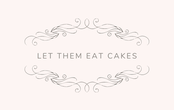











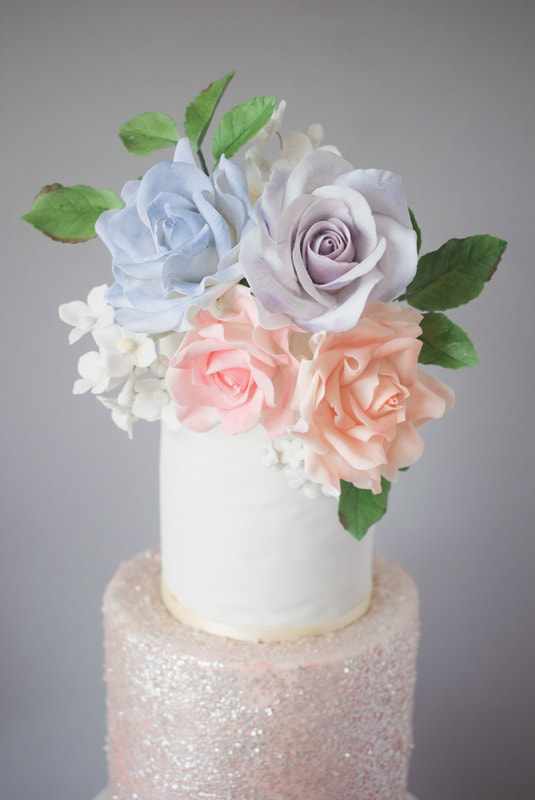




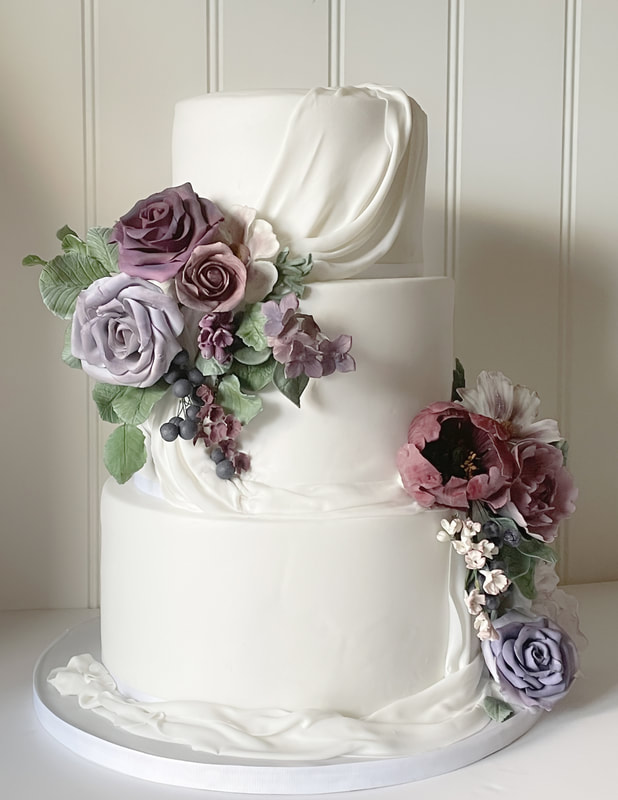
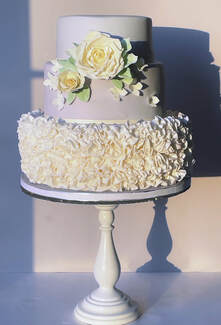





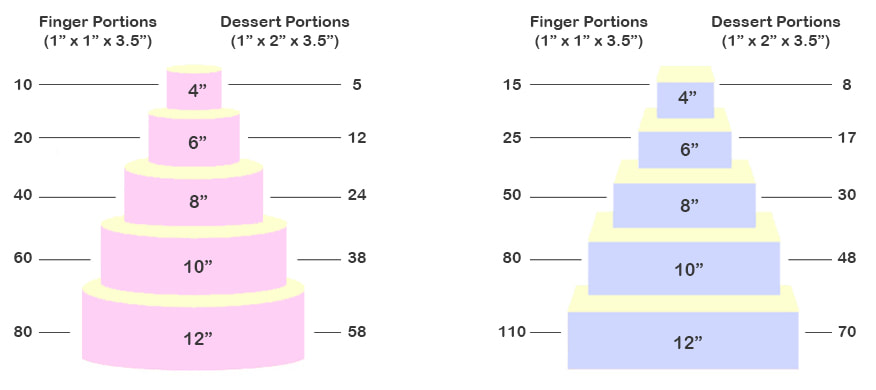

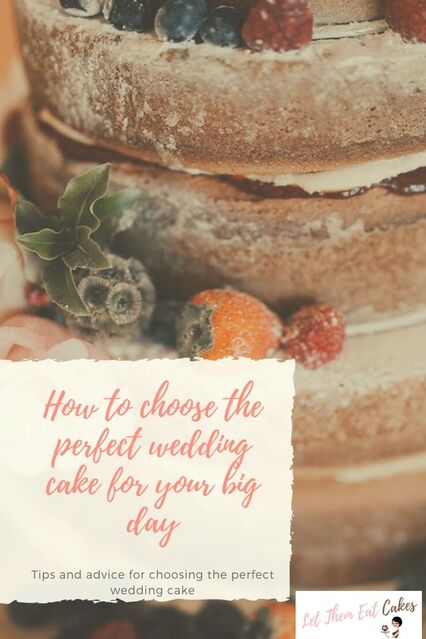

 RSS Feed
RSS Feed